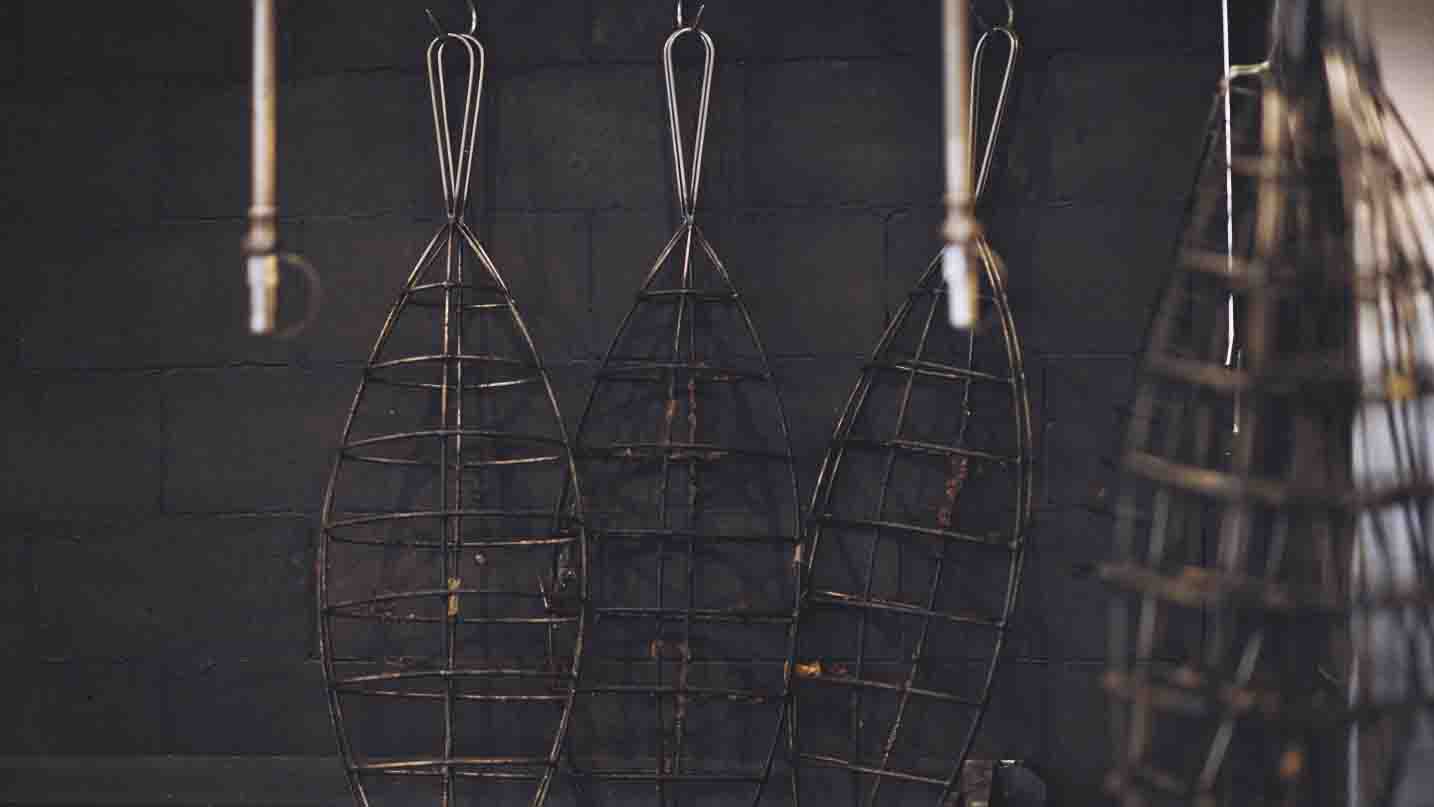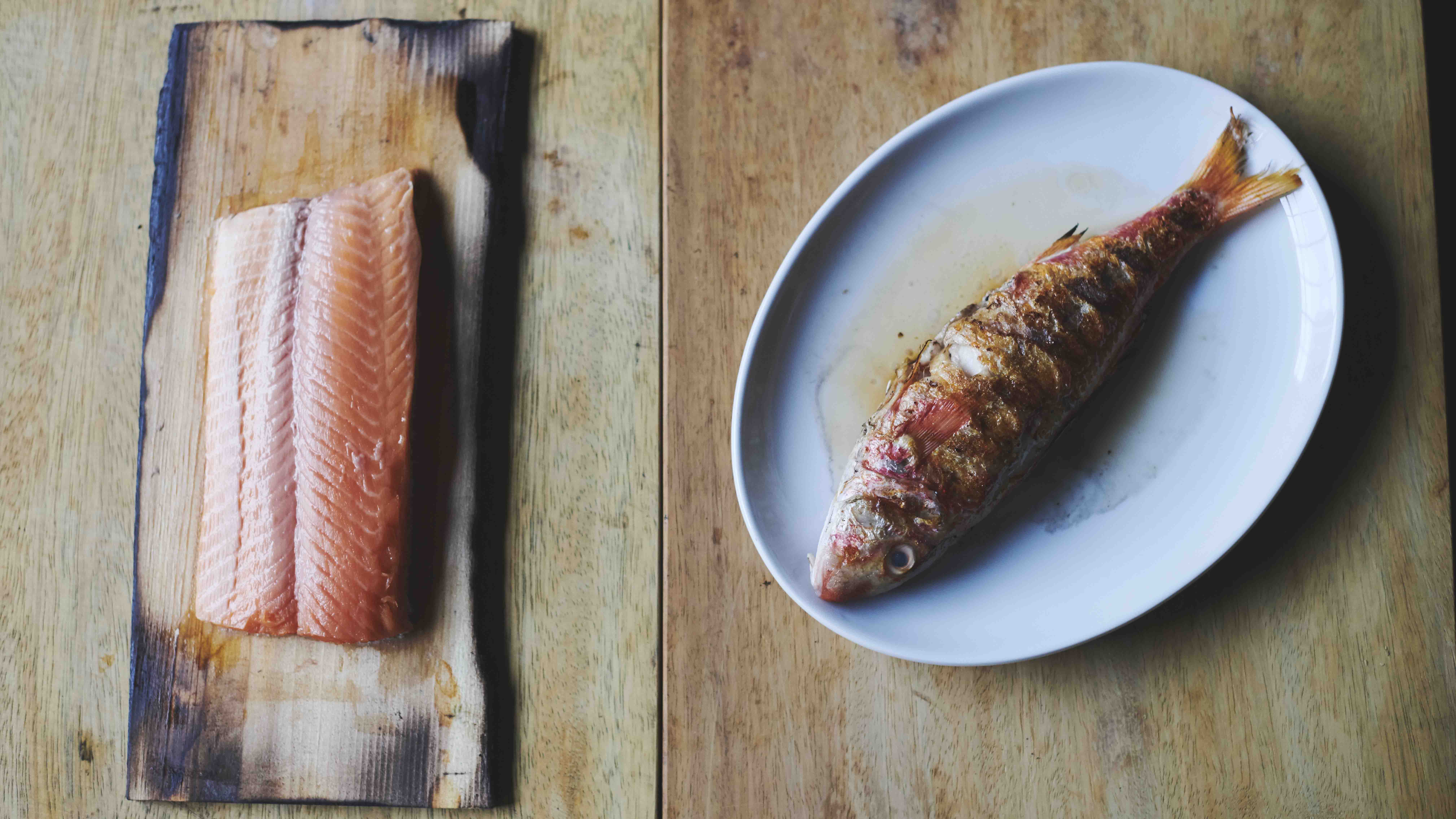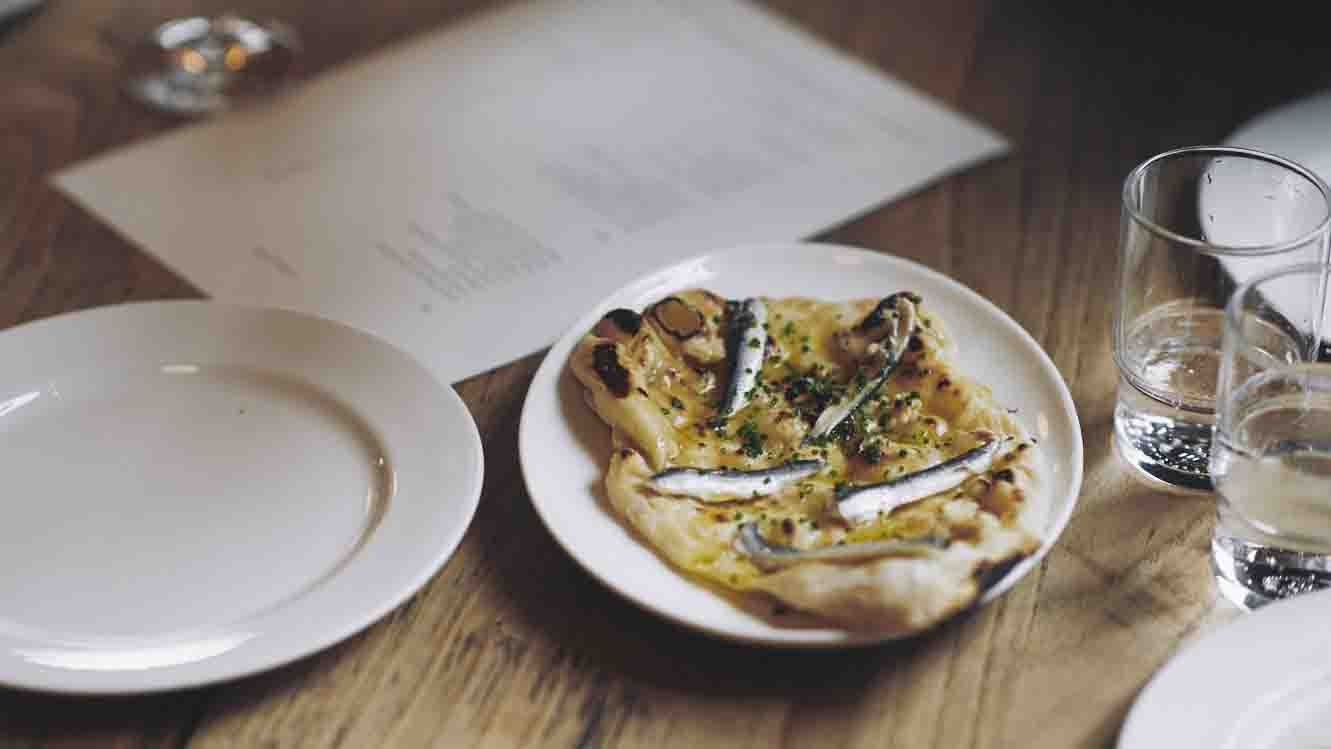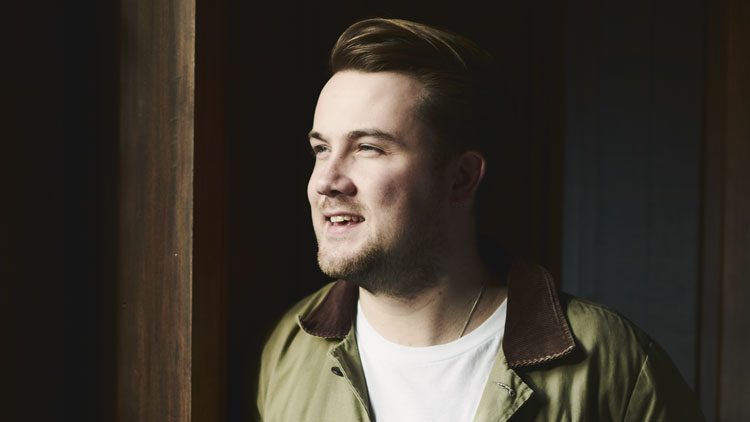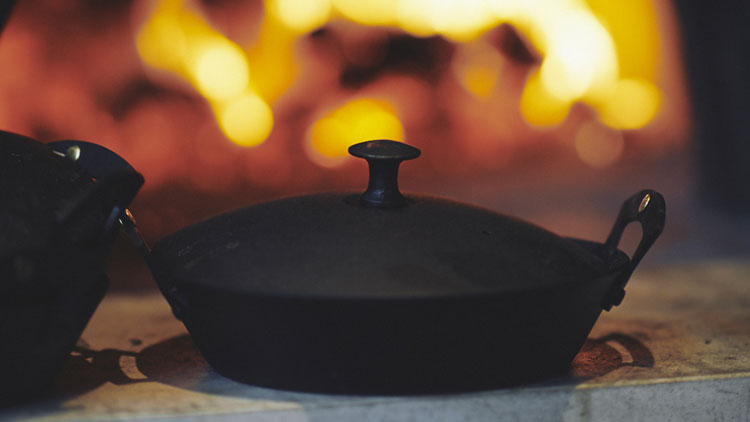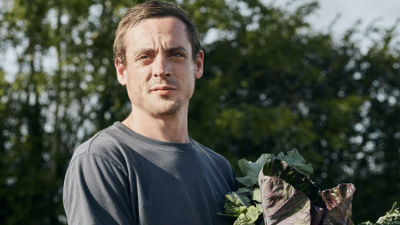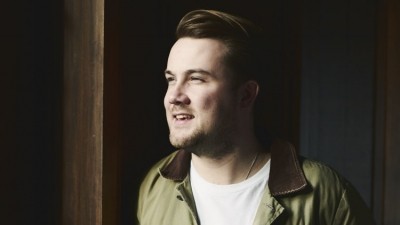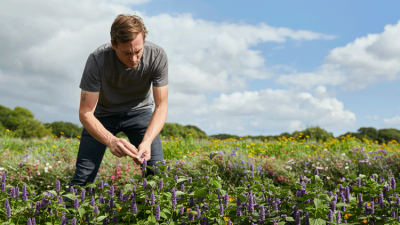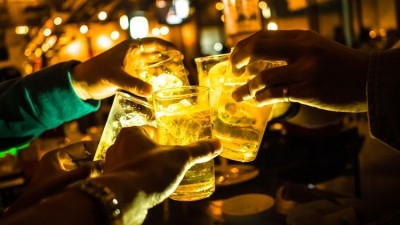Turbot Charged: Brat chef patron Tomos Parry on fish, fire, and not taking yourself too seriously
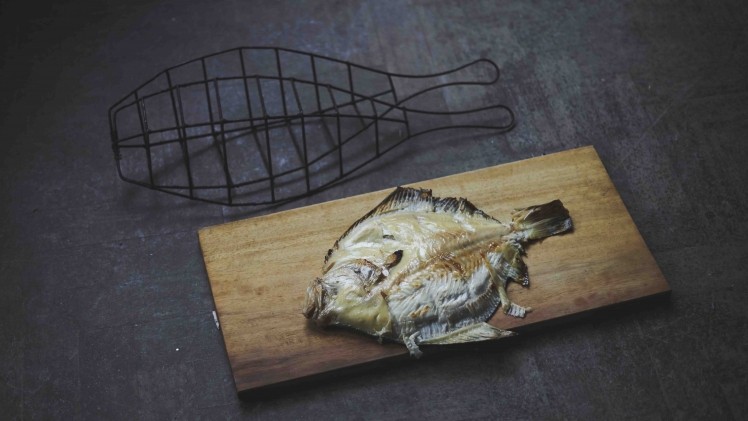
The main thing with cooking over fire is not being too uptight,” says chef Tomos Parry. “It’s quite an instinctive way of cooking – you will get things wrong and you will burn things if you misjudge it. Things can happen quite quickly.”
One look at Parry’s stove and you realise he’s not kidding. Hand-built to his own spec, and comprising four kamado-style burners filled with lump wood charcoal, it’s the ideal way, he believes, to cook fish, although you could easily lose an arm on it instead of just burning a bit of food. In fact, compared to the gleaming stainless steel cooking suites found in the kitchens of many of his contemporaries, it looks medieval. The handmade fish grilling baskets that hang close by and which resemble more piscine caged iron maidens than cooking utensils merely add to the torture chamber effect. It’s serious kit.
This is Brat, Parry’s just-opened debut solo venture in Shoreditch, a place where he practises the no-frills, fire-led cooking that has already made the Welsh chef a household name in the capital. Next to the stove is an equally meaty grill and next to that a fiercely hot wood-fired oven. If sous vide machines had souls, it is here, among Brat’s fire and fury, that they would spend eternity for crimes against meat.
Despite its rugged appearance, there is nothing brash or macho about Brat's kitchen. The fire power might look medieval but it has none of the in-your-face element you find at Temper in Soho or the big-wheeled bravado of Smokestak’s grills. In fact, it can hardly be called a kitchen at all.
With Brat there are very few divisions between the cooking, serving and bar areas; the pass is a block of wood made from a single piece of sweet chestnut – at which Parry predicts friends “will stand at and annoy me while I’m trying to cook” – and the bar is no more than a room divider, with guests able to sit either side. There is a small prep kitchen at the back with racking, a walk-in fridge and a Rational oven (which Parry admits to not having cooked with before) but little else. All this means that diners are very much in the thick of the action.
The idea was to create a type of restaurant space hitherto not seen in the capital. Brat is moulded on the family-run, fire-friendly restaurants of the port town of Getaria in northern Spain, a place Parry holds in deep fascination. To enter the first-floor restaurant, you need to first find an unassuming door on Shoreditch’s Redchurch Street that looks to be the staff entrance to Thai restaurant Smoking Goat, and then ascend the narrow stairs –an oddity in a city where practically all restaurants are ground floor or basement level, except those in hotels. It may not be hidden, but it’s as far away from being ostentatious as is feasible.
Inside the room, the original dark wood panelling that bears inscriptions of east London breweries has been untouched, as has the parquet floor, giving it an old gentleman’s club feel. And while this isn’t exactly the aesthetic Parry was going for – he wants to use white paper tablecloths to lighten the room – it’s probably not far off, given its muse.
“I wanted it to feel like the old gastronomic society private clubs,” he says. “During Franco’s time, he discouraged men from cooking, so they used to meet up in secret societies. And here, over the years, they honed their skills over the grill. I think that’s partly where the appreciation of beef and fish in Basque culture comes from.
“The room has the feel I wanted,” he adds. “There aren’t many first-floor sites in London but in Japan there are heaps of places (he attributes his choice of the word ‘heaps’ to the Aussies in his brigade) and in New York there’s a few. Hopefully people will find it.”
How has a Welshman come to open a Basque-inspired solo project above a Thai restaurant in Shoreditch- and in a former strip club no less? And why is it getting Londoners in such a froth?
Since moving to London from Wales after having studied politics and history but falling instead into the restaurant world, Parry has impressed at the top level. A stint at The River Café was followed by a stage at Noma, where he met James Knappett and went on to help him open Kitchen Table, drawn to the project, as he was, by its open kitchen. Yet it was at Climpson’s Arch in Hackney, a makeshift restaurant space, that he turned his attention to mastering the grill, and turned heads in the process.
His time at Climpson’s proved formative. Housing two huge outside wood-fired grills, the unique set-up gave Parry the opportunity to hone his skills with fire. Here he also helped long-term friend Ben Chapman, the founder of Smoking Goat, to test dishes for his upcoming restaurant. While at Climpson’s, Parry was named Chef of the Year in the Young British Foodie Awards and then met the owners of Kitty Fisher’s in Mayfair, who were also inspired by Basque cooking and who convinced him to join their restaurant as head chef. Kitty Fisher’s was a smash and Parry’s status as a chef going places was cemented.
Brat has turned out to be a restaurant combining the old feel of Kitty Fisher’s with the open kitchen of Climpson’s Arch, opened in partnership with Chapman and his business partner at Smoking Goat, Brian Hannon. When Chapman found a two-storey site for Smoking Goat in Shoreditch, but only really wanted the ground floor, Parry says he rather flippantly remarked that he’d take the space above. “It was a bit of a throwaway comment,” he says, “but then actually made a lot of sense, so we collaborated.”
Named after the Old English word for Turbot, Brat is a restaurant Parry has dreamt of for some time. In an interview in 2016, he named whole grilled turbot to share cooked directly on the coals as his ideal final meal, and that dish is now immortalised at Brat.
“The turbot is symbolic for the restaurant. When I first had that dish [in Spain], the respect for it was beyond anything I’d ever seen. There was as much love given to it as if they were roasting a whole fore rib of beef. There was such an understanding of how the collagen breaks down as you cook it. It was mind blowing. We will apply that to the rest of the menu. To get that piece of fish, you have to know the fisherman and know when he’s bringing it in. Much of the work that goes into that dish is behind the scenes.”
Turbot will be Brat’s grandstand dish, but it won’t be on the menu all the time. Parry says the best time for it is April to June in the spawning season “when the fish is really gelatinous”.
It is grilled in a basket gently over lump wood charcoal until it hits an internal temperature of 55°C to give it a ‘stickiness’ and a slight char. It is then rested in the mouth of the wood oven to relax the flesh and allow the gelatinous juices to seep out. Parry then whips the juices into a pil-pil style emulsion that is used to baste the fish as it hits the table. “It’s like cooking pork belly, you’ve got to cook it slowly to make it soft and then collagen starts to turn to sauce.”
Other dishes on the menu include rainbow trout cooked over cedar wood, soused red mullet, grilled duck, Herdwick lamb chop and Jersey beef chop, with many inspired by Parry’s Welsh heritage. The Welsh national dish of cawl will make an appearance, with the lamb first smoked on the grill before being put into a hotpot and finished in the wood oven, as well as baby peas and Carmarthen ham, a dish that encapsulates perfectly the Welsh/Basque combination.
“Carmarthen ham was precursor to Parma ham. Legend has it the Romans got the recipe from Wales and took it to Parma,” he says with evident Welsh pride. “We make a light broth from it and then cook the baby peas that are native to Getaria. They are incredibly small, like pea caviar, and the flavour is phenomenal.”
Parry currently sources the peas, which are picked after frost when they are even sweeter, directly from farmers in Getaria but, as Chapman does at Smoking Goat, is working with Cornish farmers to get a UK supply. Three different varieties are currently being grown for him, which will be ready by the beginning of May.
Brat also has a bar menu, with the likes of grilled bread and anchovy; wild rabbit, blood sausage and beans; and chopped egg salad with bottarga on the menu, but diners at the bar can, in principle, order from any menu, although Parry admits a whole roast turbot to share might be tricky.
On the wine side, Brat is collaborating with Keeling Andrew & Co, the wine import company set up by the founders of Noble Rot. The selection is approachable with a few interesting wines from old cellars alongside a 15-strong sherry list.
Those expecting the old dairy cow beef Parry made a name for himself cooking at Kitty Fisher's might be disappointed- but maybe not. While Spanish dairy cow is off the menu because Parry wants to source from the UK, he has been working closely with butcher Philip Warren to try and achieve the same flavour with native breeds. The cows are four or five years old when slaughtered and Parry is experimenting with four different breeds, some of which have dairy cow strains in them, to get the flavour.
He is also using his chef connections to help with sourcing and gets vegetables from Crocadon Farm in St Mellion, Cornwall, where former Fera at Claridge’s chef Dan Cox is opening a place. Cox sends pictures of vegetables to Parry in a WhatsApp group and helps him with sourcing – the pair regularly meet up in Cornwall.
“Because I’m just grilling produce, I can take all different sizes. We want to work with the farmers as much as possible. I know everyone says that and it sounds a bit wishy washy, but we are trying to do that.”
This use of home-grown ingredients, many of which will be sourced from Cornwall, is key to Brat’s identity. While it is openly inspired by the restaurants of Getaria and the Basque country, it is in no way a Spanish restaurant, something Parry is very keen to make clear.
“I’m not claiming to be doing Basque cuisine, I don’t have the knowledge and I’ve never worked there, but I’m inspired by that approach. All our produce is native and I’ve always cooked over fire so it feels very natural to do that. There are no Spanish dishes on the menu, apart from a burnt cheesecake – we’re not serving things like padron peppers. Hopefully people will get that.
“I’m sure people will expect it to be a bit more Spanish. Elkano [a restaurant in Getaria] does turbot like we are doing and people will compare us. But it’s not just about the turbot. In Getaria there are family-run restaurants where the owners run the show front of house, write the menus and have an amazing connection with the kitchen, they almost direct it. And the guest feels like they control it as well. That’s what I want from Brat.”
With the pass and bar as it is, guests will likely have some buy-in with the restaurant's proceedings. Parry also believes the working with fire element at Brat builds camaraderie and creativity in the kitchen in a way other restaurants don’t.
“I like the fact that it involves a lot of personality in the cooking. There’s a certain type of person that likes to cook this way and enjoys what it brings to the kitchen. Working with fire is a leveller – you can get a mix of people of all different abilities but cooking over fire brings the focus back to what’s going on. You can’t just have someone in the corner of the kitchen doing sentient processes such as passing purées.
“It helps with the interaction in the kitchen. It doesn’t matter how good you are as a chef, it always comes back to what’s cooking over the fire. I like the environment that it creates in the kitchen and the restaurant. It sound pretentious but when I’m cooking over the fire, ideas come in to my head. I can’t sit at home and write recipes, it doesn’t work like that. You need to see how food reacts with the fire.”
Water baths are a definite no-no for Parry. He appreciates the consistency that the kit brings, but believes in a different kind of consistency at Brat.
“Consistency is fantastic because it means you can’t rip off guests – but in the traditional sense, people were driven by the consistency of dishes rather than the product, whereas I’m driven by consistency and quality of product more than the consistency of the dish. I ask what’s the best fish that day, and that’s the consistency, not the dish.
“People are changing what they focus on. They say ‘I’m going to go there because they have got consistently good beef or amazing fish or bread, but I don’t give a shit what’s actually on the menu’.”
Brat, therefore, is a serious restaurant, with some serious kit and an equally serious approach to sourcing. Parry says he is inspired by people who stick to their principles or who are fully driven by their ideals, which in his opinion include Chapman and Coombeshead Farm’s Tom Adams.
“I admire people that don’t compromises but who create a balanced restaurant.”
But it’s also a fun restaurant, he stresses.
“We can get a bit caught up in taking ourselves a bit seriously as chefs, but it has to be fun as well. We’re just cooking food and you can’t take it that seriously.”
